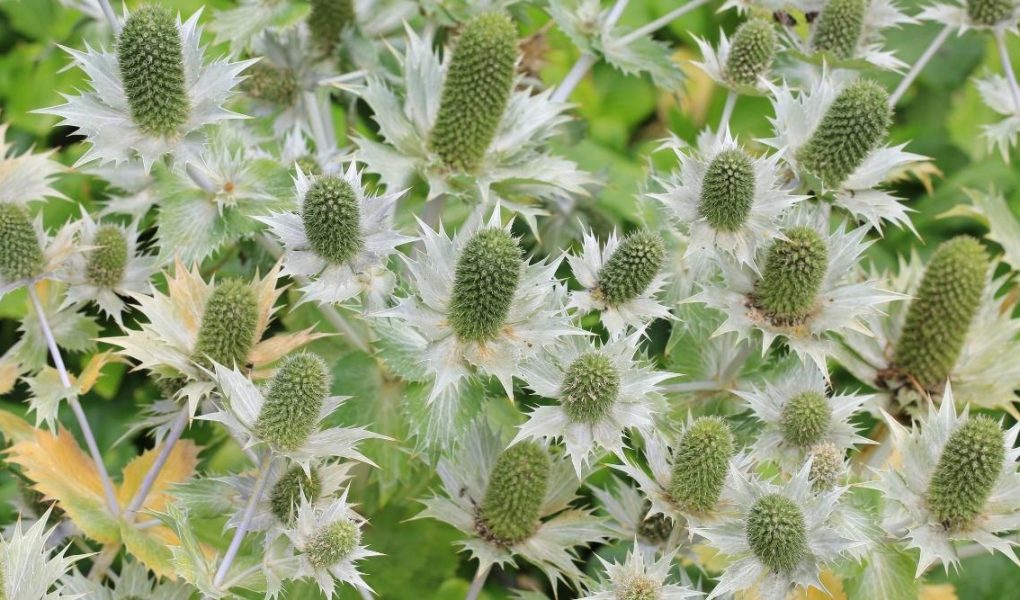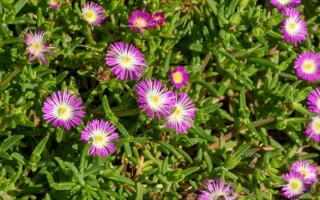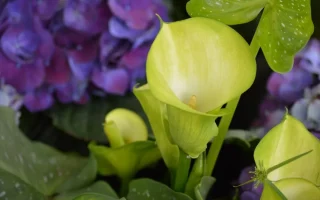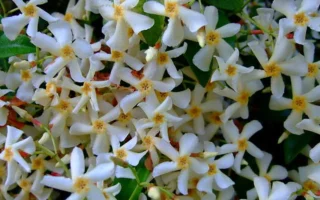kickstand-project.org – Miss Wilmott’s Ghost (Eryngium giganteum), also known as the giant sea holly, is a striking and unique flowering plant that adds a touch of mystery and allure to any garden. With its silvery-blue foliage, spiky blooms, and unusual appearance, Miss Wilmott’s Ghost stands out as a focal point in flower beds, borders, and wildflower gardens. Named after the British plantswoman Miss Ellen Willmott, this plant has captivated gardeners for centuries and continues to be a favorite for those seeking an intriguing addition to their outdoor spaces.
Origins and Habitat
Native to southern Europe and western Asia, Miss Wilmott’s Ghost thrives in dry, well-drained soils and sunny locations. It is a hardy perennial that is well-suited for a range of climates and grows best in USDA hardiness zones 4 to 9. The plant’s natural habitat includes grassy meadows, coastal areas, and dry hillsides, where it is exposed to full sun and poor soils.
Miss Wilmott’s Ghost is a drought-tolerant plant that can withstand long periods without water once established, making it an excellent choice for xeriscaping and low-water gardens. It is also known for its ability to thrive in poor, rocky soils, which is one of the reasons it is often found in naturalistic and wildflower gardens.
Characteristics and Varieties
Miss Wilmott’s Ghost is a striking perennial that typically grows to a height of 3 to 4 feet and produces unique, spiky blooms that resemble those of a thistle. The plant has deeply lobed, silvery-gray leaves that provide an attractive backdrop for its eye-catching flowers. The blooms themselves are small, metallic blue or silvery in color, and are surrounded by spiny bracts, giving the flowers a dramatic, architectural appearance.
The flowers are borne in large, globe-shaped clusters that emerge from tall, branching stems. These clusters are often surrounded by spiky, steel-blue bracts that add to the plant’s otherworldly look. The flowers bloom in mid-to-late summer and can last for several weeks, providing a long period of visual interest in the garden.
While Miss Wilmott’s Ghost is most commonly grown for its striking flowers and foliage, the plant’s overall form is also an important feature. Its tall, upright growth habit and branching stems make it an excellent plant for adding vertical interest to the garden, especially in areas where other plants may be too low-growing.
Growing Miss Wilmott’s Ghost
Miss Wilmott’s Ghost is a relatively low-maintenance plant that is easy to grow in the right conditions. It prefers full sun and well-drained soil, and it thrives in poor, rocky, or sandy soils. The plant can tolerate a range of soil types but does best in neutral to slightly alkaline soil. It is important to plant Miss Wilmott’s Ghost in a location with good drainage, as it does not tolerate soggy soil.
When planting Miss Wilmott’s Ghost, space the plants about 12 to 18 inches apart to allow for their spreading growth habit. If planting in a flower bed or border, consider placing the plant towards the back of the bed, where its tall, spiky form can provide height and structure.
Miss Wilmott’s Ghost can be grown from seeds, although it may take a few years to reach its full size and maturity. If starting from seed, sow the seeds in early spring, either indoors or directly in the garden, after the last frost date. The seeds should be lightly covered with soil and kept moist until they germinate. Once the seedlings are established, they can be transplanted to their final location.
Alternatively, Miss Wilmott’s Ghost can be propagated by division, which is a faster method of getting new plants. In early spring or late fall, dig up the plant and divide the root ball into smaller sections, each with a few healthy roots and shoots. Replant the divisions in well-drained soil, and they will establish quickly.
Watering and Fertilizing
Miss Wilmott’s Ghost is a drought-tolerant plant once established, so it does not require frequent watering. Water the plant regularly during its first growing season to help it establish strong roots, but once the plant is established, it can tolerate dry conditions. Water deeply during dry spells, but avoid overwatering, as the plant prefers well-drained soil and does not like to sit in waterlogged conditions.
The plant does not require heavy fertilization but will benefit from an annual application of a balanced, slow-release fertilizer in the spring to encourage healthy growth and abundant blooms. Too much fertilizer can lead to excessive foliage growth at the expense of flowers, so it is best to err on the side of caution.
Pruning and Maintenance
Miss Wilmott’s Ghost is a relatively low-maintenance plant, but occasional care will help ensure it continues to thrive. Deadheading spent flowers can encourage the plant to produce more blooms and can help maintain its tidy appearance. However, if you prefer, you can leave the flowers to go to seed, which will attract birds to your garden in the fall and winter.
The plant’s spiky foliage can be a bit unruly, so cutting back any overly long or damaged stems in the early spring will help maintain its shape and prevent it from becoming too leggy. Additionally, the plant may benefit from a light trim in the fall to remove any dead or damaged foliage before the winter months.
Wildlife and Pollinator Benefits
Miss Wilmott’s Ghost is an excellent plant for attracting pollinators, particularly bees and butterflies. The small, tubular flowers are rich in nectar, making them highly attractive to a variety of pollinators. The plant’s tall, spiky form provides a landing platform for bees and butterflies, allowing them to feed comfortably.
In addition to pollinators, Miss Wilmott’s Ghost’s seeds are enjoyed by birds, particularly finches and sparrows, which will flock to the plant in late summer and fall to feed on the seeds.
Symbolism and Significance
The striking appearance of Miss Wilmott’s Ghost has led to its association with mystery, strength, and resilience. Its ability to thrive in tough conditions, such as poor soil and drought, symbolizes endurance and tenacity. The plant’s otherworldly look has also made it a symbol of the unknown, making it a fitting addition to gardens that explore themes of the mystical or the fantastical.
Miss Wilmott’s Ghost in Garden Design
Miss Wilmott’s Ghost is an excellent choice for gardens that seek to make a bold statement. Its tall, spiky growth habit makes it ideal for creating vertical interest in flower beds, borders, or wildflower gardens. The plant pairs well with other drought-tolerant and sun-loving plants, such as lavender, sedum, and ornamental grasses, where it can add texture and structure to the landscape.
The plant’s silvery-blue foliage and dramatic blooms also make it a great option for cottage gardens, rock gardens, or Mediterranean-style gardens. Miss Wilmott’s Ghost works well in naturalistic or wildflower gardens, where its unique appearance can be appreciated among other plants with a similar drought-tolerant and low-maintenance nature.
Conclusion
Miss Wilmott’s Ghost is a captivating and unique plant that brings mystery and elegance to any garden. With its striking blue flowers, silvery foliage, and spiky form, it is a perfect choice for gardeners looking to add a touch of drama and vertical interest to their outdoor spaces. Easy to grow and care for, Miss Wilmott’s Ghost is a hardy, drought-tolerant plant that thrives in poor, well-drained soil and full sun. Whether used as a focal point in a flower bed, border, or wildflower garden, Miss Wilmott’s Ghost is sure to attract attention and add beauty and intrigue to your garden all season long.




